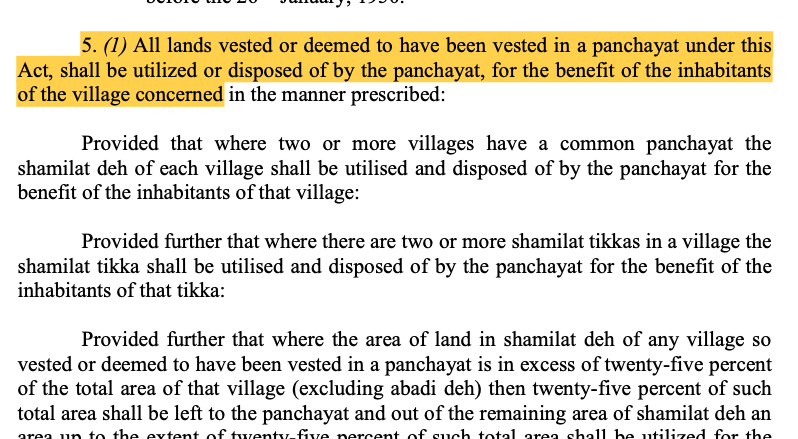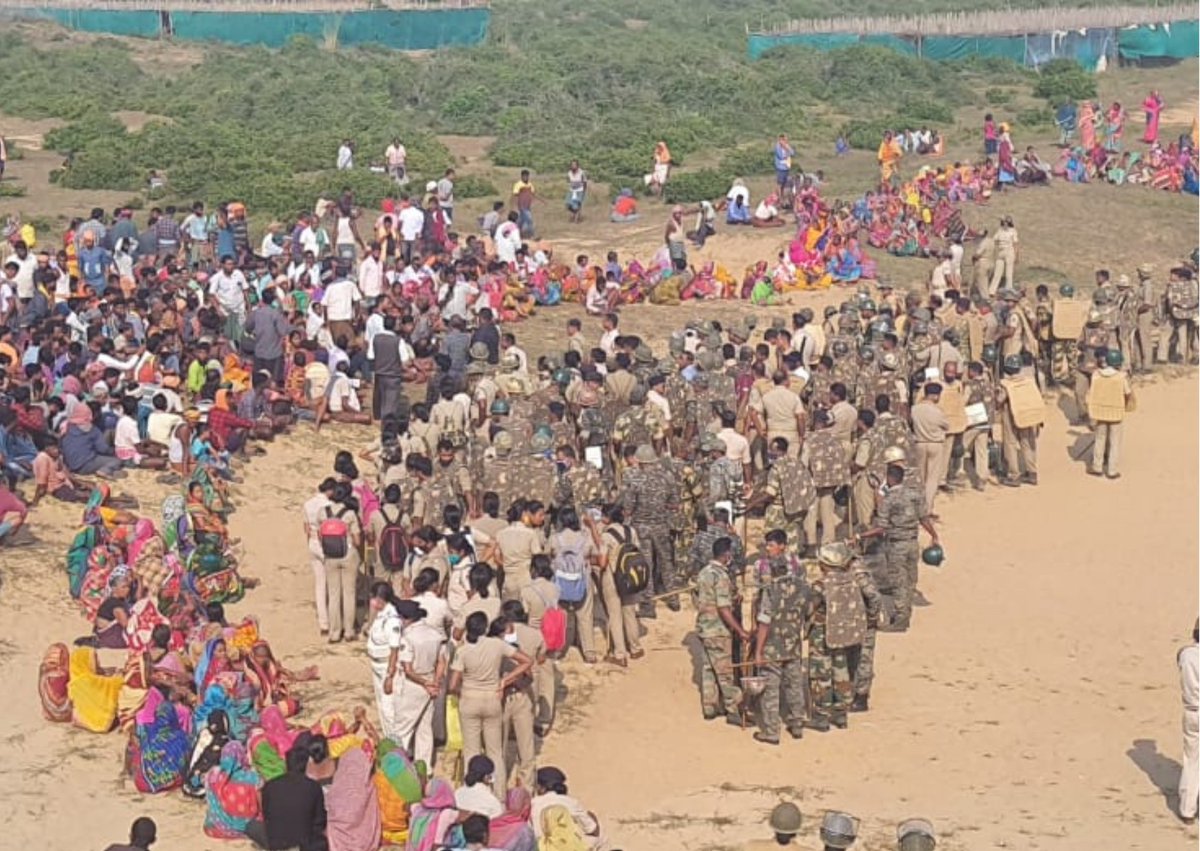
Punjab’s Dalit groups, labour unions & farmers are protesting again. This time, it’s to protect their common lands. For years, the state has been trying to transfer these lands out of the villagers’ control, and into the hands of industries - now, by amending the law. #LCWThread 

The Punjab Village Common Lands (Regulation) Act, 1961 governs common land in Punjab. It vests these lands in the gram panchayat to *manage*. Some of these lands are made up of villagers’ own contributions and managed by the Panchayat for their benefit. 

Rule 6 of the Punjab Village Common Lands Rules, 1964 reserves 1/3 of cultivable common land for members of scheduled castes. Ill-implemented land reforms have systematically left Dalit communities landless, making this safeguard the only chance for many to have land to cultivate 

In practice, however, this was rarely the case. “Dominant caste farmers would ensure that the common land is in the name of the Dalit labourer they employ, and reap its benefits,” says Ranjit Singh Shakri, leader of the Dalit Dasta Virodhi Andolan (@ddvavsj2013) in Tarn Taran.
As recently as April 2022, the Supreme Court has directed that common land may be used solely for the benefit of the villagers, so much so that even common land made up of villagers’ own contributions may not be returned to individual proprietors. 

But Punjab’s government has been trying to wrestle common lands out of the community’s control & into the hands of industries for years, by using them to create “land pools” to be used for corporations. Here’s an excerpt from the state’s Industrial & Business Development Policy: 

In 2019, it approved an amendment to the Punjab Village Common Lands (Regulation) Rules, 1964 by inserting Rule 12B, allowing Panchayats to transfer common shamlat lands for industrial projects. Supposedly to “promote development of villages” by “unlocking the value” of the land.
This, despite the fact that the Supreme Court has repeatedly directed that village common lands are for common use such as grazing and tilling, and prohibited the sale or use of common lands to third parties or any commercial development. Here's an excerpt from a 2011 judgment: 

The state of Punjab also has a long history of land-grabbing. In 2012, the state’s High Court had appointed a commission headed by retired Justice Kuldip Singh, to look into the issue.
Having studied records of nearly 40 villages, the commission found that nearly 25,000 acres of land had been illegally occupied through thousands of faulty sale deeds. It named politicians, cops and bureaucrats as having grabbed land: something the 2019 amendment would legalise.
The Punjab govt’s moves to dilute the law didn’t stop in 2019. On September 26 this year, the cabinet approved an amendment to Section 2(g) of the Punjab Village Common Land (Regulation) Act, granting *exclusive ownership* of common land to the Panchayat - an unprecedented move.
Would exclusive ownership granted by the Punjab government to gram panchayats allow the latter to sell common land to third parties or otherwise alienate it? The government hasn’t made it clear.
“With this new amendment to the Act, the land will be owned by the Panchayat, and the dominant castes who control the Panchayats could do away even with the quota for Dalits,” says Shakri. The land could also be given away to industries, despite the Supreme Court's directions.
Farmers who'll be impacted by the amendments too have staunchly opposed the move. Protests have erupted among farmer, labour & Dalit groups (see surl.li/difpi) who demand that ownership rights should be granted to cultivators of the lands who have tilled them for years.
“With this change,” says Nirbhay Singh Dhudike (@NDhudike), president of the Kirti Kisan Union (@KirtiKisan), “the Panchayat could transfer the land to corporates, lease it out, or worse: evict those who are currently using it to cultivate and graze their livestock.”
Research by @DilrajLawyer and @mukta_jo. We’ve covered this issue and more in our monthly newsletter. Subscribe, and visit our website for more updates on land and natural resource conflicts: landconflictwatch.org
• • •
Missing some Tweet in this thread? You can try to
force a refresh








